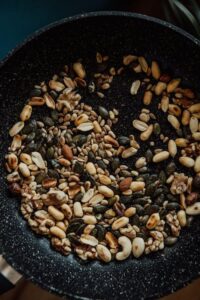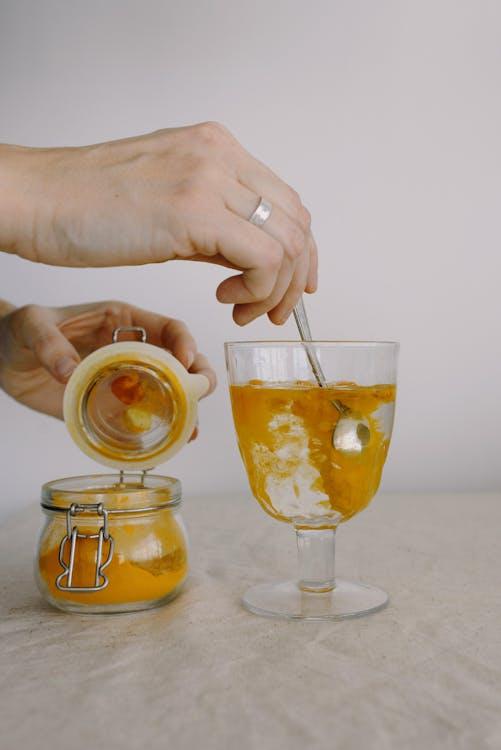Whether you’re recovering from a sprained ankle, back strain, or repetitive use injury such as tendinitis, what you eat can make a meaningful difference. While most people focus on rest, physical therapy, or medication, there’s another powerful tool that’s often overlooked: your diet.
Injuries trigger inflammation, your body’s natural way of protecting damaged tissue and starting the healing process. But when inflammation lingers or becomes chronic, it can delay recovery and even make pain worse. Fortunately, certain foods have been shown to help regulate this response and support the body as it heals.
This blog breaks down the best anti-inflammatory foods for injury, explains why they work, and gives you practical ways to build a recovery-friendly diet without diving into fads or expensive supplements.
Why Food Matters After an Injury
Your body needs specific nutrients to repair tissue, reduce swelling, and manage pain. A diet filled with processed ingredients, added sugars, and trans fats can actually increase inflammation, while whole, nutrient-dense foods do the opposite; they help calm the body and provide the raw materials needed for healing. This doesn’t mean you need to go gluten-free, keto, or organic overnight.
What matters is incorporating more anti-inflammatory ingredients into your everyday meals and snacks—colorful vegetables, healthy fats, lean proteins, and antioxidant-rich fruits. It’s a sustainable, science-backed way to support your recovery, boost energy levels, and prevent inflammation from becoming a long-term health issue.

The Best Anti-Inflammatory Foods for Injury Recovery
Here’s a breakdown of the most powerful foods to include in your recovery routine, along with why they work:
1. Fatty Fish (Salmon, Sardines, Mackerel)
Rich in omega-3 fatty acids, these fish help reduce the production of inflammatory compounds such as cytokines. Omega-3s have been shown to improve joint function and even reduce pain in people with chronic inflammatory conditions.
Tip: Aim for two servings a week or try a quality canned version for convenience.
2. Leafy Greens (Spinach, Kale, Swiss Chard)
Loaded with antioxidants and vitamins like A, C, and K, leafy greens support cellular repair and reduce oxidative stress—two things your body needs after injury.
Tip: Add a handful of leafy greens to smoothies, stir-fries, or omelets.
3. Berries (Blueberries, Strawberries, Blackberries)
Berries are rich in polyphenols and anthocyanins, plant compounds that help fight inflammation and improve circulation, key for tissue repair.
Tip: Snack on them fresh, frozen, or mix them into oatmeal or yogurt.
4. Turmeric (with Black Pepper)
Turmeric contains curcumin, a natural anti-inflammatory compound. When paired with black pepper (which boosts absorption), it becomes a powerful way to manage inflammation post-injury.
Tip: Try adding it to warm milk, soups, or rice dishes.
5. Nuts and Seeds (Walnuts, Flaxseeds, Chia Seeds)
These are good sources of omega-3s and healthy fats that help regulate inflammation and support joint health.
Tip: Sprinkle them over salads, oatmeal, or blend them into smoothies.

6. Olive Oil (Extra Virgin)
Packed with monounsaturated fats and antioxidants, olive oil mimics the effects of ibuprofen in the way it reduces inflammation.
Tip: Use it as your primary cooking oil or as a base for dressings and marinades.
Foods to Limit During Recovery
As important as it is to focus on healing foods, it’s also smart to avoid ingredients that worsen inflammation, especially during recovery. These include:
- Processed snacks and fast food
- Sugary drinks and excess desserts
- Refined carbohydrates (white bread, pastries)
- Alcohol in excess
- Hydrogenated oils and trans fats
You don’t have to be perfect. Just reducing these items while increasing your intake of anti-inflammatory foods for injury can tilt the balance in your favor.

Meal Ideas to Support Healing
If you’re wondering how to put all of this into practice, here are a few easy, anti-inflammatory meal ideas:
- Breakfast:Oatmeal with chia seeds, blueberries, and a spoonful of almond butter
- Lunch:Grilled salmon salad with kale, avocado, walnuts, and olive oil dressing
- Snack:Greek yogurt with turmeric and honey, topped with flaxseeds
- Dinner:Stir-fried veggies with tofu, garlic, ginger, and turmeric over brown rice
- Hydration:Green tea, water with lemon, or golden milk
These meals don’t require a huge shift in routine—they’re just smarter choices that align with your body’s healing needs.
How Diet Supports the Bigger Picture of Recovery
While nutrition can’t replace rest or medical treatment, it absolutely plays a supporting role. Combining the right foods with smart movement, hydration, quality sleep, and stress management creates the ideal environment for healing.
And if your injury is serious enough to require time off from work or school, remember, taking that time is part of recovery too. Chronic pain or reinjury often starts when we rush back too soon. Listening to your body, eating well, and protecting your recovery window can prevent setbacks in the long run.
If your symptoms make daily functioning difficult, you may need a doctor’s note for work or even FMLA certification to ensure you have time to fully heal.

Eat to Heal and Rest the Right Way
Injury recovery isn’t just about ice packs and physical therapy. What you put on your plate plays a powerful role in how well and quickly you heal.
By focusing on anti-inflammatory foods for injury, you’re giving your body the fuel it needs to reduce swelling, rebuild tissue, and restore movement. Combine that with rest, hydration, and the right documentation, and you’ll set yourself up for a safer, smoother recovery.
If you’re taking time off due to an injury, proper documentation helps protect your job and peace of mind. With My Doctor’s Note, you can get a real doctor’s note online from a licensed provider, without waiting for an in-person appointment. They also offer FMLA certification services if your recovery requires extended leave under the Family and Medical Leave Act.
Eat well. Heal fully. Get your doctor’s note online from My Doctor’s Note today and support your recovery, inside and out.


